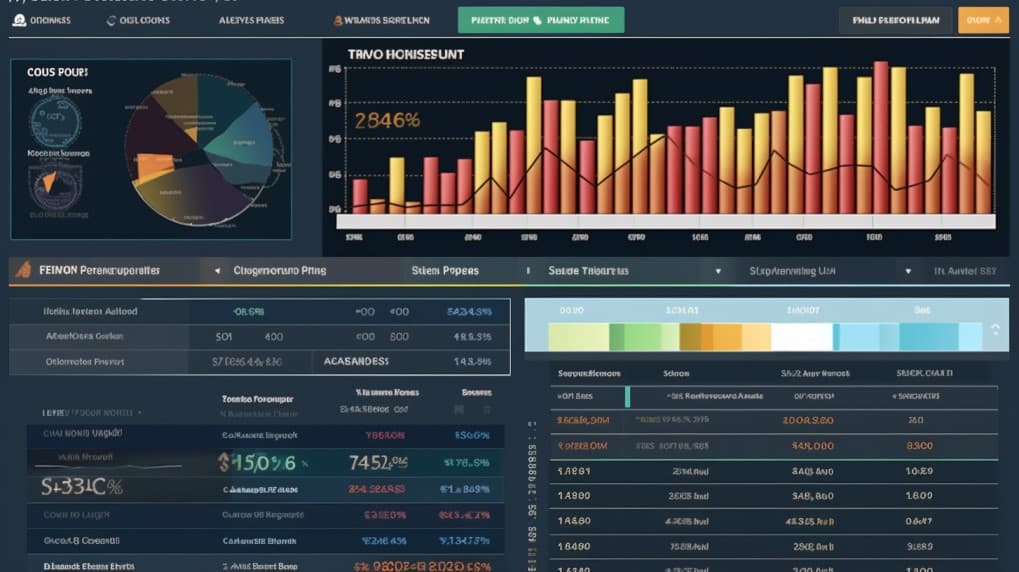
What is the UOCT ETF?
UOCT ETF : Overview
The UOCT ETF operates with a distinctive investment strategy, seeking to combine market exposure with downside protection. At its core, the fund invests at least 80% of its net assets in Flexible Exchange® Options ("FLEX Options") that are linked to the SPDR® S&P 500® ETF Trust, often referred to as the Underlying ETF. FLEX Options are a particular type of exchange-traded option contracts that offer customizable terms, allowing investors to tailor their exposure to market movements. While FLEX Options are guaranteed for settlement by the Options Clearing Corporation (OCC), they still carry some degree of counterparty risk and might be less liquid compared to traditional exchange-traded option contracts.
One of the unique features of the UOCT ETF is its predefined outcomes, which include both a buffer and a cap. These outcomes are determined based on the performance of the Underlying ETF's share price over a specific period, known as the Outcome Period. This period typically spans approximately one year, running from October 1 through September 30 of the following year.
UOCT ETF : Understanding FLEX Options
To grasp the UOCT ETF's investment strategy, it's essential to comprehend the mechanics of FLEX Options. These options are agreements between a buyer and seller, giving the buyer the right to buy or sell a specific asset at a predetermined price on a future date. In the case of the UOCT ETF, the reference asset is the Underlying ETF, which aims to mirror the price and yield performance of the S&P 500® Index.
The fund leverages FLEX Options to create layers within its portfolio, strategically using call and put options. Call options provide exposure to upward price movements, subject to a maximum return cap. On the other hand, put options are utilized to offer a buffer against losses within a certain range. The Buffer aims to protect investors from declines in the Underlying ETF's share price within a specified threshold, typically between 5% and 35%. However, the Buffer does not provide protection beyond a decrease of 35%.
[Image_placeholder]
UOCT ETF : The Cap and Potential Returns
The Cap represents the upper limit of potential returns that an investor can achieve within the Outcome Period. While the UOCT ETF's returns are linked to the performance of the Underlying ETF's share price, any excess returns above the Cap are not passed on to the fund's shareholders. The Cap is determined at the beginning of each Outcome Period based on prevailing market conditions, including interest rates, volatility, and option prices.
It's crucial to note that the Cap is not static and can vary from one Outcome Period to the next. This emphasizes the importance of considering the Cap when investing in the UOCT ETF, as it dictates the potential upside gains.
UOCT ETF : Managing Risk and Expectations
Investing in the UOCT ETF requires an understanding of the fund's risk management and potential outcomes. The Buffer and Cap work together to balance the fund's potential returns and protections against losses. While the Buffer provides a safeguard against moderate declines, the Cap ensures that excessive market gains do not overly benefit the fund's
shareholders.
It's important to emphasize that the UOCT ETF's strategy is not focused on generating income, making it less suitable for income-seeking investors. Additionally, the fund's returns may not directly mirror the day-to-day movements of the Underlying ETF's share price due to factors such as option expiration and time remaining until the Outcome Period concludes.
Conclusion
The UOCT ETF presents a distinctive approach to investing by combining market exposure with downside protection. Its reliance on FLEX Options and its defined outcomes set it apart from traditional ETFs. As with any investment, potential investors should conduct thorough research, assess their risk tolerance, and consider seeking advice from financial professionals before investing in the UOCT ETF.
Disclaimer: This article is provided for informational purposes only and does not constitute investment advice. The UOCT ETF's performance may be subject to market fluctuations and counterparty risks associated with FLEX Options. Individuals considering investing in the UOCT ETF should carefully read the fund's prospectus and consult with a qualified financial advisor. The author of this article does not provide investment advisory services.
UOCT ETF issuer
UOCT ETF official page
UOCT quote and analysis
Discover the top holdings, correlations, and overlaps of ETFs using our visualization tool.
Our app allows you to build and track your portfolio.
To learn more about the UOCT Innovator U.S. Equity Ultra Buffer ETF - October, access our dedicated page now.
FAQ
What is the UOCT ETF?
UOCT ETF, is an exchange-traded fund that provides investors with exposure to companies operating in the relevant sector.
What is the underlying index that the UOCT ETF aims to track?
UOCT ETF aims to track the performance of a specific index, which includes companies involved in various aspects of the relevant industry.
What types of companies are included in the UOCT ETF?
UOCT ETF includes companies from the relevant industry, which may consist of specialized firms, equipment manufacturers, and other related entities.
How does the UOCT ETF work?
UOCT ETF functions by pooling investors' capital to purchase a diversified portfolio of related stocks, aiming to replicate the performance of the underlying index.
What are the advantages of investing in the UOCT ETF?
Investing in the UOCT ETF offers exposure to a specialized sector with potential for growth and innovation. It allows investors to diversify within the industry, which could experience significant advancements and expansion in the future.